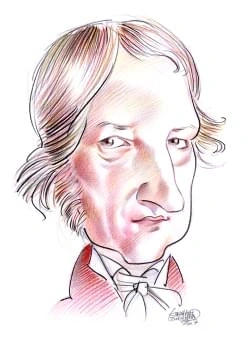211 résultats pour "agricultural"
-
Nova Scotia - Canadian History.
summer. Nova Scotia receives an average of more than 1,140 mm (45 in) of rain annually, with the Atlantic shore receiving 1,400 mm (55 in) or more. Most of the provincereceives about 1,900 mm (about 70 in) of snow, and considerable winter precipitation comes in the form of rain or ice storms. The average temperature in January, thecoldest month, is generally about -4°C (about 25°F) near the coast and somewhat colder toward the interior. The average temperature in July, the hottest month, isabout...
-
Maine - geography.
temperatures range from 17° to 21°C (62° to 70°F) with the southern interior being the warmest and the east coast and north the coolest. However, daytime summertemperatures may reach the lower 30°s C (lower 90°s F), and temperatures in winter have fallen as low as -44°C (-48°F) in the interior. D2 Precipitation Precipitation (rainfall and snowfall) in Maine is evenly distributed throughout the year. Most areas receive from 860 to 1,020 mm (34 to 40 in) yearly, although parts ofthe coast are som...
-
Maine - USA History.
temperatures range from 17° to 21°C (62° to 70°F) with the southern interior being the warmest and the east coast and north the coolest. However, daytime summertemperatures may reach the lower 30°s C (lower 90°s F), and temperatures in winter have fallen as low as -44°C (-48°F) in the interior. D2 Precipitation Precipitation (rainfall and snowfall) in Maine is evenly distributed throughout the year. Most areas receive from 860 to 1,020 mm (34 to 40 in) yearly, although parts ofthe coast are som...
- agricultural gods
-
Victoria (city, British Columbia) - Geography.
routes, and good agricultural land. These advantages were publicized by Sir James Douglas, the chief factor (administrative head) of the company’s Pacific Coastoperations, who founded the fort. They were in turn recognized by the British Colonial Office, which made Victoria the capital of the colony of Vancouver’s Island (the oldname for Vancouver Island) in 1849. The community’s growing commercial importance during the Fraser River and Cariboo gold rushes of the 1850s led to itsincorporation in...
-
South America - geography.
B Natural Regions Tierra del Fuego, ArgentinaUshuaia, on Argentina’s island of Tierra del Fuego, is the world’s southernmost city. Argentina claims part of the Tierra del Fuegoarchipelago, including the largest island, known as Tierra del Fuego or Great Island, and Staten Island. Chile claims the remainder ofthe islands in the territory.R. Van Nostrand/Photo Researchers, Inc. Rising abruptly from the northwestern and western coasts of the continent are the Andes. They consist of a single chain...
-
Indian Music
I
INTRODUCTION
Classical Dance of South India
The southern Indian kathakali is a dance drama that dates from the 17th century.
Sangita Ratnakara, was written in the 13th century. However, subsequent writers tended to focus on the emotional connotations of individual ragas, associating them with moods, performance times, colors, and deities, and grouping them in terms of families. The modern theoretical system began in the 16th century, when ragasbegan to be classified according to scale—72 in the Karnāṭak system and 10 principal ones in the Hindustani. The 72 mela, as the Karn āṭak scales are called, are derived thro...
-
South Dakota - geography.
C1 Temperatures Average January temperatures are everywhere less than -4° C (24° F) and decrease to less than -12° C (10° F) in some northern sections. The January temperaturesin Sioux Falls range from -16° to -4° C (3° to 24° F). Nightime lows of -29° C (-20° F) occur during most winters. July averages are in the low and middle 20°s C (lowand middle 70°s F) throughout most of the state, and are somewhat lower in the Black Hills. The average temperature range in Sioux Falls in July is 17° to 30...
-
-
South Dakota - USA History.
C1 Temperatures Average January temperatures are everywhere less than -4° C (24° F) and decrease to less than -12° C (10° F) in some northern sections. The January temperaturesin Sioux Falls range from -16° to -4° C (3° to 24° F). Nightime lows of -29° C (-20° F) occur during most winters. July averages are in the low and middle 20°s C (lowand middle 70°s F) throughout most of the state, and are somewhat lower in the Black Hills. The average temperature range in Sioux Falls in July is 17° to 30...
-
Dominica - country.
Other crops are being promoted to diversify the economy away from reliance on bananas. They include coffee, cacao, mangoes, citrus fruit, and root vegetables. Pumice is quarried and exported on Dominica. Manufacturing is on a small scale and largely limited to the processing of farm products. The main manufactured goodsare fruit juices, alcoholic beverages, soap, and essential oils. The island also has electronic assembly plants, data-processing companies, and garment manufacturers. The governme...
-
Dallas (Texas) - geography.
VI RECREATION Dallas contains more than 400 parks that cover a total of about 20,000 hectares (about 50,000 acres). Notable parks include Marsalis Park, which contains the DallasZoo, and the parks surrounding White Rock Lake, Bachman Lake, and Lake Cliff. City-owned greenbelts parallel White Rock Creek, Turtle Creek, and the Trinity River.Fair Park contains a number of museums, the city aquarium, and the Cotton Bowl stadium (the site of the annual Cotton Bowl college football game), as well as...
-
Côte d'Ivoire - country.
D Culture Traditional artistic expressions in Côte d’Ivoire include woodcarvings (particularly masks), decorative fabrics, and acrobatic dancing. Urban populations have beengreatly influenced by French culture. The French language is almost universally used in the written literature of Côte d’Ivoire, to the exclusion of the African languages. IV ECONOMY About 60 percent of Côte d’Ivoire’s total labor force is employed in farming and forestry. Government efforts to avoid dependence on a small...
-
Ontario - Geography.
governed Ontario’s initial settlement and development. The province’s most important river is the St. Lawrence. Its route was much improved and enlarged by dredgingand canal building in the mid-20th century. This enabled large ocean-going vessels to reach Great Lake ports ( see St. Lawrence Seaway). The Ottawa River was an important early route to the interior for fur traders and timber merchants. The Niagara River, because of its falls, is a great center of hydroelectric power as well as aninte...
-
Ontario - Canadian History.
governed Ontario’s initial settlement and development. The province’s most important river is the St. Lawrence. Its route was much improved and enlarged by dredgingand canal building in the mid-20th century. This enabled large ocean-going vessels to reach Great Lake ports ( see St. Lawrence Seaway). The Ottawa River was an important early route to the interior for fur traders and timber merchants. The Niagara River, because of its falls, is a great center of hydroelectric power as well as aninte...
-
Barbados - country.
Barbados is served by a public library system centered in Bridgetown. B Culture The culture of Barbados combines English institutions, which evolved through more than three centuries of English rule, with a folk culture of African origin. Because ofits English traditions, Barbados is sometimes called “Little England.” Cricket has traditionally been the national game, and the island has produced some of the sport’sgreatest players. Water sports including surfing, swimming, snorkeling, and sailin...
-
Population.
year AD 1, and it took more than 1,500 years to reach the 500 million mark. Growth was not steady but was marked by oscillations dictated by climate, food supply, disease, and war. Starting in the 17th century, great advances in scientific knowledge, agriculture, industry, medicine, and social organization made possible rapid acceleration inpopulation growth. Machines gradually replaced human and animal labor. People slowly acquired the knowledge and means to control disease. By 1900 the worldp...
-
-
Latin American Music
I
INTRODUCTION
Tito Puente Playing the Drums
Since the 1950s American drummer Tito Puente has popularized Latin American music, especially the mambo, in the
United States.
Panpipe Music of BoliviaWell before the Spanish conquest, native peoples such as the Quechua and Aymara living in the Andes Mountains inBolivia, Peru, and Ecuador, developed a rich musical tradition. Panpipes (set of tuned pipes), made of ceramic, sugarcane,or bone were paired with shell trumpets, cane flutes, and drums, which accompanied dancers during religious and secularceremonies. Large ensembles of 4 to 20 panpipe players are still the norm, and Spanish influences have since beenintegrated...
-
Biodiversity.
a common molecule, ribonucleic acid (RNA), and most also have deoxyribonucleic acid (DNA). These molecules direct the production of proteins—molecules responsiblefor the structure and function of virtually all living cells. This is the evolutionary chain of life. All species are descended from a single common ancestor. From that ancient single-celled microbe, all inherited RNA. As time goesby, species diverge and develop their own peculiar attributes, thus making their own contribution to biodiv...
-
Biodiversity - biology.
a common molecule, ribonucleic acid (RNA), and most also have deoxyribonucleic acid (DNA). These molecules direct the production of proteins—molecules responsiblefor the structure and function of virtually all living cells. This is the evolutionary chain of life. All species are descended from a single common ancestor. From that ancient single-celled microbe, all inherited RNA. As time goesby, species diverge and develop their own peculiar attributes, thus making their own contribution to biodiv...
-
Ecology.
an input of nutrients exceeding the capability of the ecosystem to process them. Nutrients eroded and leached from agricultural lands, along with sewage and industrialwastes accumulated from urban areas, all drain into streams, rivers, lakes, and estuaries. These pollutants destroy plants and animals that cannot tolerate theirpresence or the changed environmental conditions caused by them; at the same time they favor a few organisms more tolerant to changed conditions. Thus,precipitation filled...
-
Ecology - biology.
an input of nutrients exceeding the capability of the ecosystem to process them. Nutrients eroded and leached from agricultural lands, along with sewage and industrialwastes accumulated from urban areas, all drain into streams, rivers, lakes, and estuaries. These pollutants destroy plants and animals that cannot tolerate theirpresence or the changed environmental conditions caused by them; at the same time they favor a few organisms more tolerant to changed conditions. Thus,precipitation filled...
-
Ukraine - country.
a major hazard, especially to Ukraine’s water supply. The Chernobyl’ complex was finally shut down completely in December 2000, with the financial assistance ofWestern nations. The funds were to pay for the completion of two other nuclear power plants that would produce enough power to make up for the loss of the powersupply from the Chernobyl’ plant. III PEOPLE OF UKRAINE The population of Ukraine was estimated in 2008 at 45,994,287, giving the country a population density of 76 persons per s...
-
Slavery in Africa.
The spread of Islam from Arabia into Africa after the religion’s founding in the 7th century AD affected the practice of slavery and slave trading in West, Central, and East Africa. Arabs had practiced slave raiding and trading in Arabia for centuries prior to the founding of Islam, and slavery became a component of Islamic traditions.Both the Qur'an (Koran) (the sacred scripture of Islam) and Islamic religious law served to codify and justify the existence of slavery. As Muslim Arabs conquered...
-
Missouri - geography.
Saint Francois Mountains, at the eastern end of the crest of the dome. Only in these mountains have the sedimentary rocks been sufficiently eroded away so that theunderlying igneous rocks are exposed. They form the rounded, knoblike peaks of an old mountain range. The peaks project, in isolation or in clusters, between 230 and300 m (750 and 1,000 ft) above the surrounding sedimentary basins. One of these knobs, Taum Sauk Mountain, reaches 540 m (1,772 ft) above sea level and is thehighest point...
-
-
Missouri - USA History.
Saint Francois Mountains, at the eastern end of the crest of the dome. Only in these mountains have the sedimentary rocks been sufficiently eroded away so that theunderlying igneous rocks are exposed. They form the rounded, knoblike peaks of an old mountain range. The peaks project, in isolation or in clusters, between 230 and300 m (750 and 1,000 ft) above the surrounding sedimentary basins. One of these knobs, Taum Sauk Mountain, reaches 540 m (1,772 ft) above sea level and is thehighest point...
-
Panama Canal - Geography.
The size of ships using the Panama Canal has steadily increased. About 27 percent of the vessels that use the canal are built to the maximum dimensions that can passthrough it (a category called “Panamax”). This has prompted further widening of Gaillard Cut, so that the larger Panamax vessels may transit safely. However, some ofthe world’s commercial and military ships are too large for the canal. Since the 1940s, new U.S. battleships and aircraft carriers have been built exceeding the canal’sdi...
-
Brazil - country.
occasional droughts. Brazil contains a wealth of mineral and plant resources that have not yet been fully explored. It possesses some of the world’s largest deposits of iron ore and containsrich deposits of many other minerals, including gold and copper. Brazil’s fossil fuel resources are modest, but this limitation is offset by the considerable hydroelectricpotential of the nation’s many rivers. Although Brazil is an important producer of tropical crops, areas of highly fertile land are limited...
-
Africa.
The highest elevations in Africa are found in the various ranges of East Africa. After Kilimanjaro, the next highest peaks are Mount Kenya (5,199 m/17,057 ft), north ofKilimanjaro in central Kenya; Margherita Peak (5,109 m/ 16,762 ft) in the Ruwenzori Range on the border between Uganda and the Democratic Republic of the Congo(DRC); Ras Dashen (4,620 m/ 15,157 ft) in the Ethiopian Highlands of northern Ethiopia; Mount Meru (4,565 m/ 14,977 ft), close to Kilimanjaro in Tanzania; and MountElgon (4,...
-
Africa - Geography.
The highest elevations in Africa are found in the various ranges of East Africa. After Kilimanjaro, the next highest peaks are Mount Kenya (5,199 m/17,057 ft), north ofKilimanjaro in central Kenya; Margherita Peak (5,109 m/ 16,762 ft) in the Ruwenzori Range on the border between Uganda and the Democratic Republic of the Congo(DRC); Ras Dashen (4,620 m/ 15,157 ft) in the Ethiopian Highlands of northern Ethiopia; Mount Meru (4,565 m/ 14,977 ft), close to Kilimanjaro in Tanzania; and MountElgon (4,...
-
Bahrain - country.
A Religion Almost all Bahrainis and the majority of nonnatives are followers of Islam (Muslims). About 70 percent of all native Bahrainis belong to the Shia branch of Islam, whilethe remainder, including the ruling al-Khalifa clan, are adherents of the Sunni branch. Non-Muslims, including Hindus, Buddhists, Christians, and Jews, account for 15percent of the total population. High unemployment among the Shia population has caused considerable discontent on the part of this group toward the Sunni...
-
India - country.
delta in the north, are intensely farmed. B Rivers and Lakes The rivers of India can be divided into three groups: the great Himalayan rivers of the north, the westward-flowing rivers of central India, and the eastward-flowingrivers of the Deccan Plateau and the rest of peninsular India. Only small portions of India’s rivers are navigable because of silting and the wide seasonal variation inwater flow (due to the monsoon climate). Water transport is thus of little importance in India. Barrages,...
-
Atlantic Slave Trade.
members of the planters’ society. Through most of the years of the Atlantic trade, prices for Africans remained favorable in relation to the price of the crops theyproduced. They were, thus, the best economic solution for plantation owners seeking inexpensive labor. The Atlantic slave trade began as a trickle in the 1440s and grew slowly through the 17th century. By 1700, 25,000 slaves, on average, were crossing the Atlantic everyyear. After 1700 the trade grew much more rapidly to a peak in the...
-
-
Bhutan - country.
languages ( see Indo-Iranian Languages) and follow Hinduism. Nepalese people constitute a significant portion of Bhutan’s population. They are the most recent settlers, occupying south central and southwestern Bhutan. TheNepalese are mainly Rai, Gurung, and Limbu ethnic groups from the eastern mountains of Nepal. Nepalese immigration has been banned since 1959, when theBhutanese government feared the minority would become too populous. Nepalese are not permitted to live in the central Middle Hi...
-
Kansas - geography.
at the adjoining cities of Kansas City, Kansas, and Kansas City, Missouri. Its chief headstreams are the Republican and Smoky Hill rivers, which join to form the KansasRiver at Junction City. Each of the headstreams has numerous tributaries. The Kansas River proper is only 270 km (170 mi) long, but the Smoky Hill River has a lengthof 870 km (540 mi), and the Republican River has a length of 720 km (450 mi). The main tributary flowing into the Kansas River is the Big Blue River. The Arkansas Rive...
-
Kansas - USA History.
at the adjoining cities of Kansas City, Kansas, and Kansas City, Missouri. Its chief headstreams are the Republican and Smoky Hill rivers, which join to form the KansasRiver at Junction City. Each of the headstreams has numerous tributaries. The Kansas River proper is only 270 km (170 mi) long, but the Smoky Hill River has a lengthof 870 km (540 mi), and the Republican River has a length of 720 km (450 mi). The main tributary flowing into the Kansas River is the Big Blue River. The Arkansas Rive...
-
United Kingdom - country.
B Natural Regions and Topography The island of Great Britain can be divided into two major natural regions—the highland zone and the lowland zone. The highland zone is an area of high hills andmountains in the north and west. The lowland zone in the south and east consists mostly of rolling plains. The zones are divided by an imaginary line running throughEngland from the River Exe on the southwest coast to the mouth of the River Tees on the northeast coast. The lowland zone has a milder climat...
-
Illinois - geography.
the state before joining the Mississippi River at Grafton. The Illinois has been deepened and straightened and forms part of the Illinois Waterway. The watershed between rivers that flow into the Mississippi river system and rivers that flow into the Great Lakes is low and in many places is not easily discernible. Inwhat is now the Chicago area, explorers had little difficulty portaging, or carrying, their canoes over the low watershed between the Des Plaines River, which flows intothe Illinois,...
-
Illinois - USA History.
the state before joining the Mississippi River at Grafton. The Illinois has been deepened and straightened and forms part of the Illinois Waterway. The watershed between rivers that flow into the Mississippi river system and rivers that flow into the Great Lakes is low and in many places is not easily discernible. Inwhat is now the Chicago area, explorers had little difficulty portaging, or carrying, their canoes over the low watershed between the Des Plaines River, which flows intothe Illinois,...
-
France - country.
In both the Paris and Aquitaine basins, fertile soils derived from limestone and wind-deposited dust, called loess, have supported prosperous agriculture since ancienttimes. Other lowlands in France are scattered and relatively small. They include the Alsace Plain in the east, bordering Germany, the valley of the Rhône River in thesoutheast, and the Languedoc Plain along the Mediterranean coast. A2 Uplands France contains several regions of uplands, the worn down remains of ancient mountain sys...
-
Blacks in Latin America.
Throughout Latin America and the Caribbean the slave population declined at the astonishing rate of 2 to 4 percent a year; thus, by the time slavery was abolished, theoverall slave population in many places was far less than the total number of slaves imported. The British colony of Jamaica, for example, imported more than 600,000slaves during the 18th century; yet, in 1838, the slave population numbered little more than 300,000. The French colony of Saint-Domingue (present-day Haiti)imported mo...
-
-
Yemen - country.
port. Al Ḩudaydah (155,110), in the Tih āmah, is the second largest port. Ta‘izz, (178,043), in the highlands above Aden, is an important commercial and light industrialcenter. Among Yemen’s larger towns are Şa‘dah, far to the north; Dham ār, Yarim, and Ibb, in the middle region; Al Mukall ā, on the southern coast; and in Hadhramaut,the towns of Shib ām, Say‘ ūn, and Tar īm. C Language Nearly all Yemenis speak Arabic. However, the country’s extremely rugged terrain, widely separated population...
-
Environment.
escape into space of the infrared energy radiated back out by Earth. This process is referred to as the greenhouse effect. These gases, primarily carbon dioxide,methane, nitrous oxide, and water vapor, insulate Earth’s surface, helping to maintain warm temperatures. Without these gases, Earth would be a frozen planet with anaverage temperature of about -18°C (about 0°F) instead of a comfortable 15°C (59°F). If the concentration of these gases rises, they trap more heat within theatmosphere, caus...
-
Laos - country.
by the year 2025. About one-quarter of Laos’s people live in mountainous regions. The rest live in upland valleys or on the flood plains of the Mekong and its tributaries.Just over three-quarters of the population live in rural areas, although the proportion of people living in urban areas is steadily increasing. Vientiane is the capital and largest city of Laos. Louangphrabang, the former royal capital, is an increasingly popular tourist destination. Other major cities are theregional capitals...
-
Minnesota - geography.
C Climate Minnesota’s climate is classified as humid continental because normally there is a sufficient amount of precipitation to provide at least some surplus for runoff, andbecause Minnesota’s temperature conditions are largely controlled by its location in the interior of the large landmass of North America. The result is extreme seasonaltemperature variations. The average January temperature is about -18°C (about 0°F) in the northwest and about -10°C (about 14°F) in the south, but thetherm...
-
Minnesota - USA History.
C Climate Minnesota’s climate is classified as humid continental because normally there is a sufficient amount of precipitation to provide at least some surplus for runoff, andbecause Minnesota’s temperature conditions are largely controlled by its location in the interior of the large landmass of North America. The result is extreme seasonaltemperature variations. The average January temperature is about -18°C (about 0°F) in the northwest and about -10°C (about 14°F) in the south, but thetherm...
-
Bosnia and Herzegovina - country.
Serb military campaigns in 1992 and 1993 and Croat campaigns in 1993 and 1995 were aimed at expelling others from areas claimed by these groups. By the end ofthe war almost all non-Serbs had been expelled from Serb-claimed lands in eastern and northern Bosnia, and non-Croats from Croat-claimed lands in southwesternBosnia. In turn, most non-Muslims had left land under Muslim control in northwestern Bosnia. The largest cities had mixed populations in 1991, but the war and its aftermath made them a...
-
Native American Architecture.
B Relationship to the Universe and Nature A more profound difference between European American and Native American perceptions lay in how human beings saw themselves in relationship to the universe andin what they believed their responsibilities were to the natural world and to each other. Most European Americans saw themselves as separate from creation andadversaries of nature, ever struggling to conquer and subdue nature and force it to yield to their will. Native Americans saw themselves as...
-
Wisconsin (state) - geography.
-6° C (22° F) in the southeast, along the Lake Michigan shore. During winter extremely cold weather persists for several weeks at a time. C2 Precipitation Average annual precipitation ranges from 700 to 800 mm (28 to 32 in). Rainfall is generally heaviest during the spring and summer, and snowfall is generally moderatein the south, but can be quite heavy in the north. Thunderstorms, sometimes accompanied by devastating tornadoes, are common in spring and summer, particularly inthe southern part...
-
-
Wisconsin (state) - USA History.
-6° C (22° F) in the southeast, along the Lake Michigan shore. During winter extremely cold weather persists for several weeks at a time. C2 Precipitation Average annual precipitation ranges from 700 to 800 mm (28 to 32 in). Rainfall is generally heaviest during the spring and summer, and snowfall is generally moderatein the south, but can be quite heavy in the north. Thunderstorms, sometimes accompanied by devastating tornadoes, are common in spring and summer, particularly inthe southern part...
-
Ireland - country.
F Plants and Animals Ireland’s animal life does not differ markedly from that of England or France. Over many centuries of human settlement almost all of Ireland’s natural woodlands werecleared, and indigenous animals such as bear, wolf, wildcat, beaver, wild cattle, and the giant Irish deer (a type of fallow deer) gradually disappeared. However, thehardy and versatile Connemara pony, Ireland’s only native pony breed, has been used by Irish farmers since prehistoric times. The great auk, or gar...
}})








